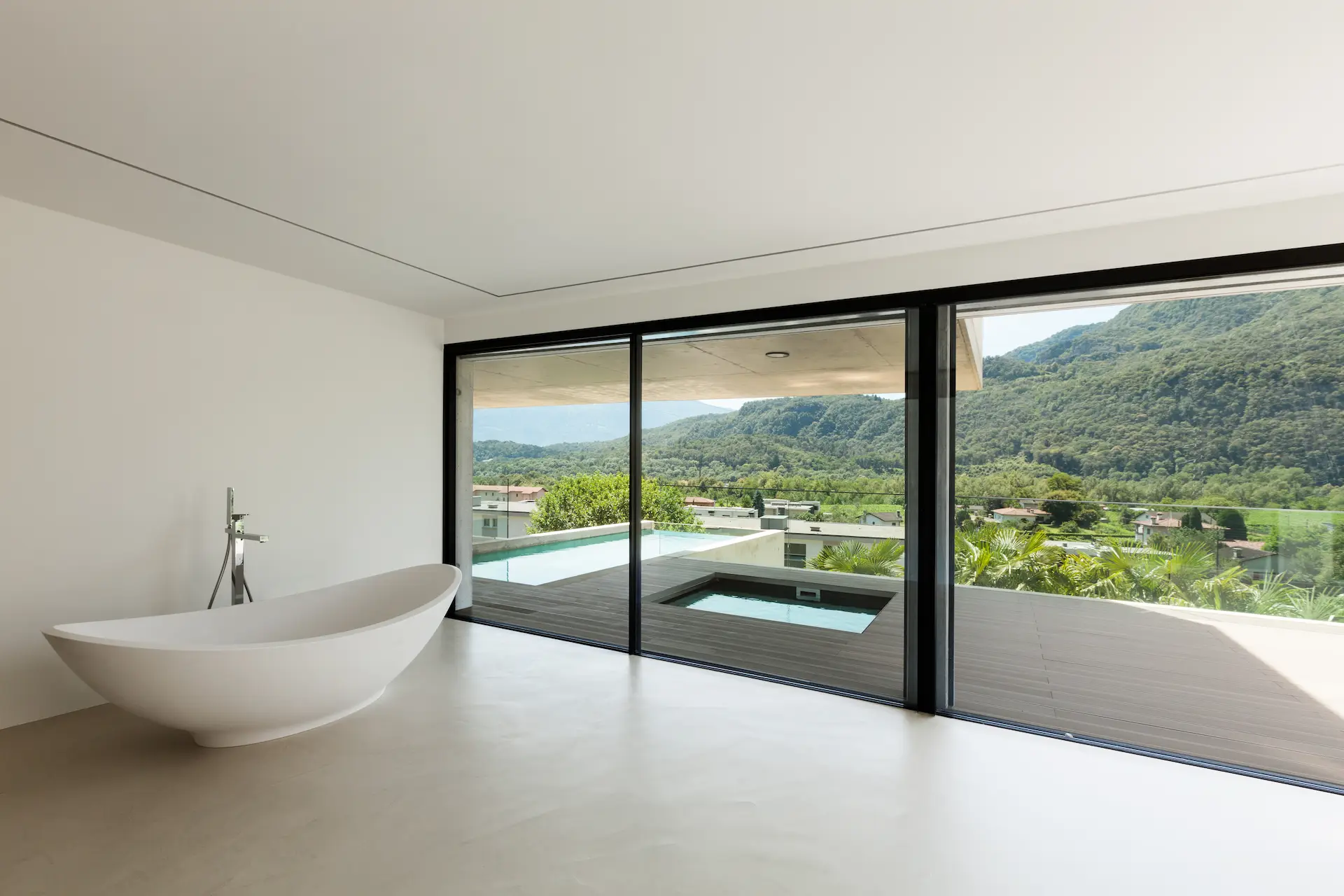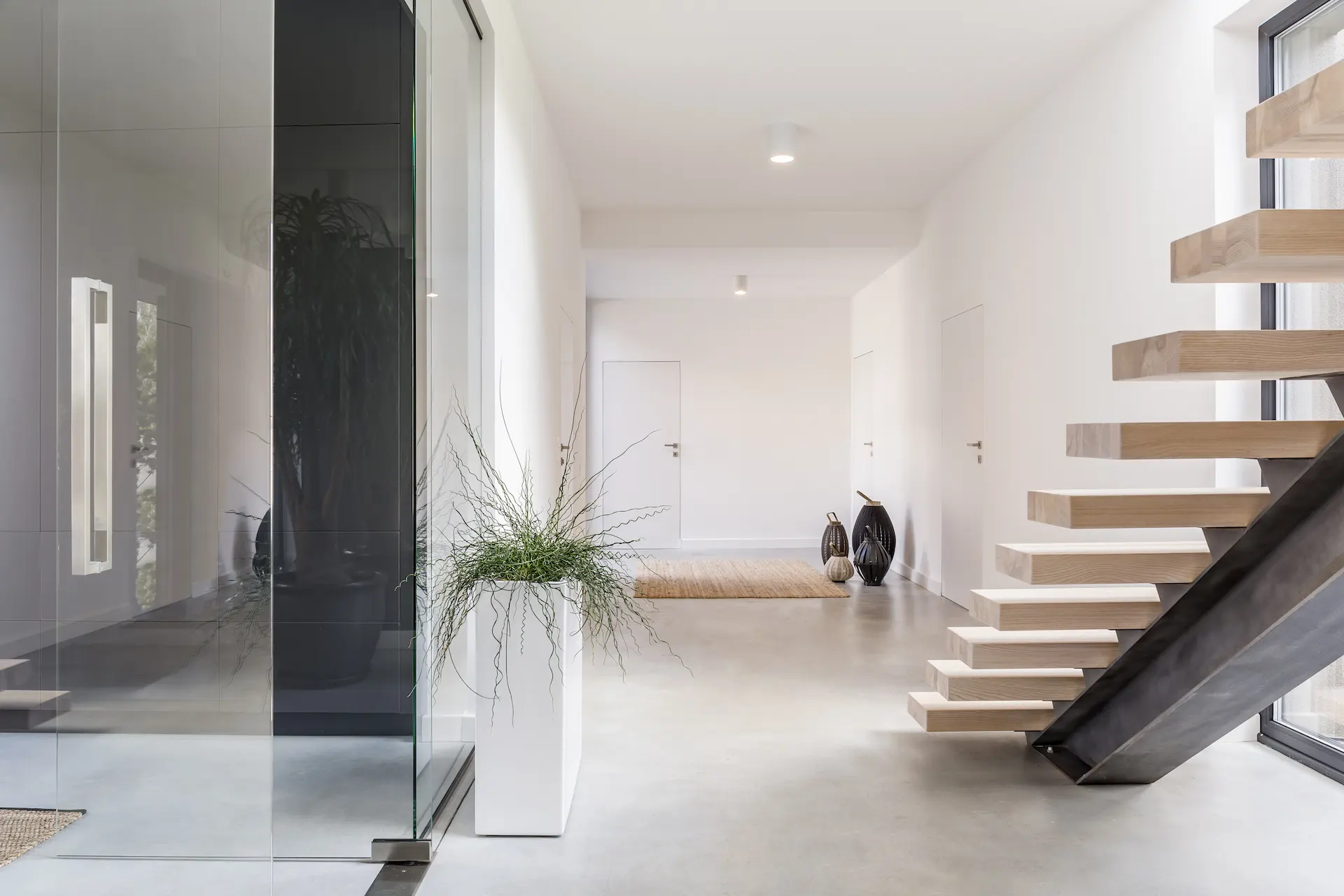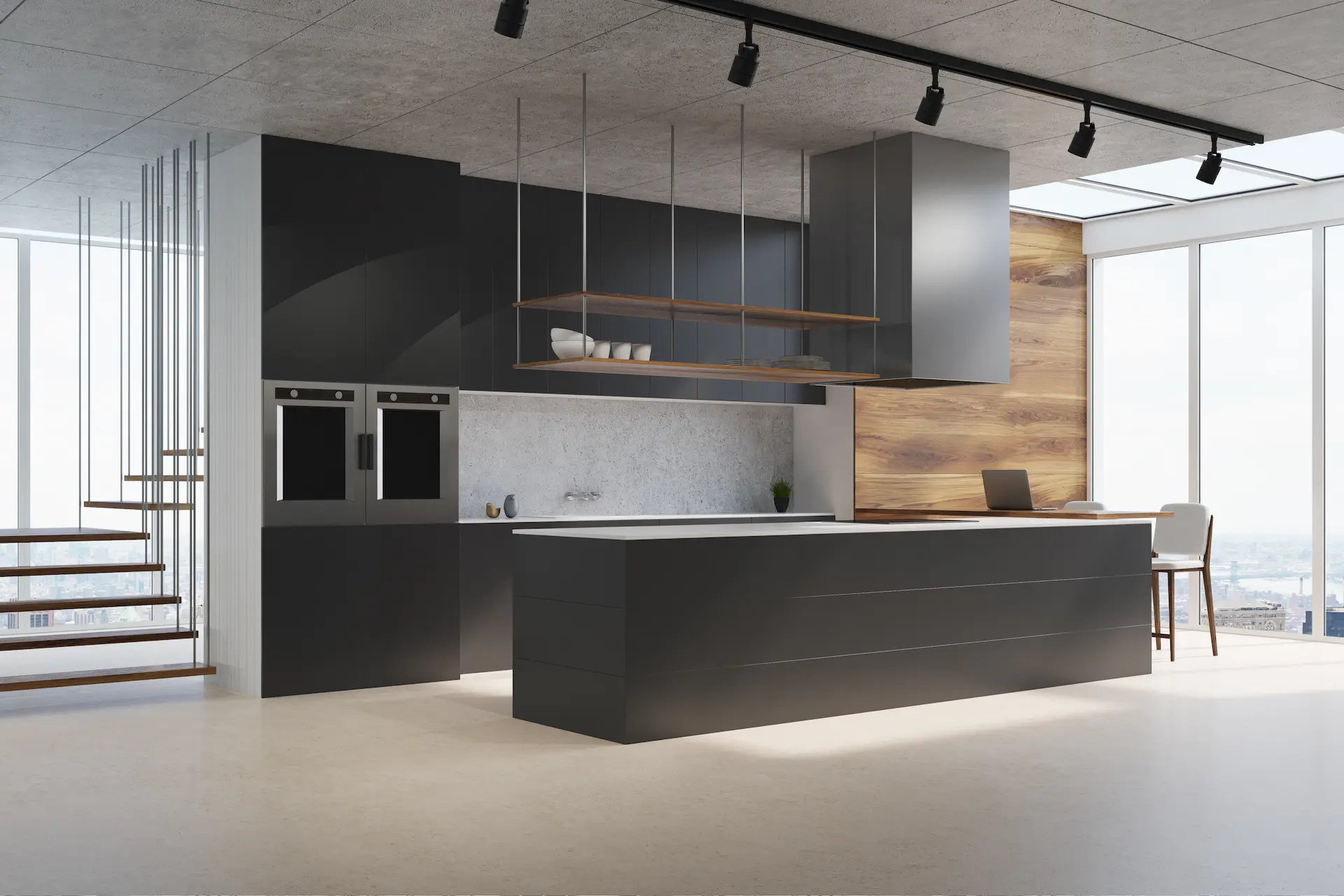Just like microcement, liquid porcelain is also a material that is in high demand for the qualities it offers, its excellent finish, and its price. But, which is better? The answer is simple: it depends on the finish you are looking for, the surface to be renovated, and the execution process.
If we focus on the surface, while microcement can be applied on walls and floors and even furniture, liquid porcelain is only recommended for its viscosity on floors and other horizontal surfaces. As for the finish, there are also notable differences. The first is smooth and uniform and can range from matte to satin. The second, with a much shinier and transparent appearance, can incorporate 3D elements and create very powerful visual effects.
Visible differences also in the application process. Liquid porcelain is exclusive for interiors, as the epoxy resin it contains can yellow outdoors. It also requires the application of a self-leveler. Microcement, on the other hand, can be placed outdoors, and in fact it is done a lot on facades, terrace pavements, swimming pools, etc. We finish with the price. The cost of a liquid porcelain coating is much higher than that of microcement.
Polished microcement as such does not exist. The correct term is polished cement. Two terms that are often confused. Polished cement, also known as polished concrete, is not a coating, but a decorative finish. Applicable only on interior floors, it is characteristic for its bright and shiny appearance as a result of the use of a rotary polisher that polishes the surface. It also requires expansion joints.
Smoothed microcement is another way to refer to microcement. A material that incorporates the most advanced technology to replace the finish of cement in a faster and more economical way.
A pigmented coating formed by the mixture of cement powder, polymers, quartz, and resins. From the sum of its layers, a thickness between 2 and 3 millimeters is created. It is placed without removing or stirring the existing coating and without joints.



